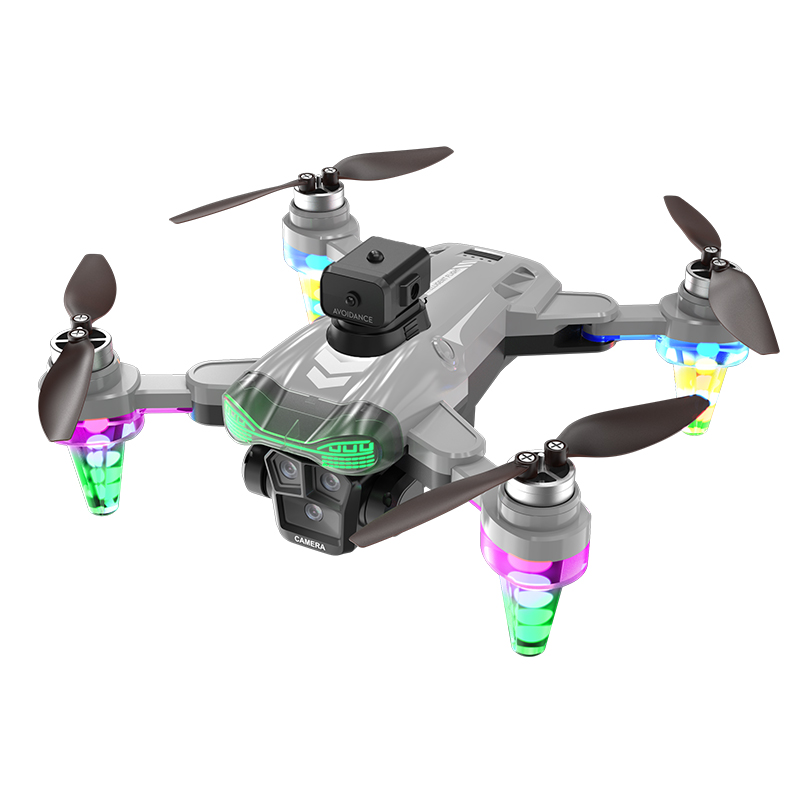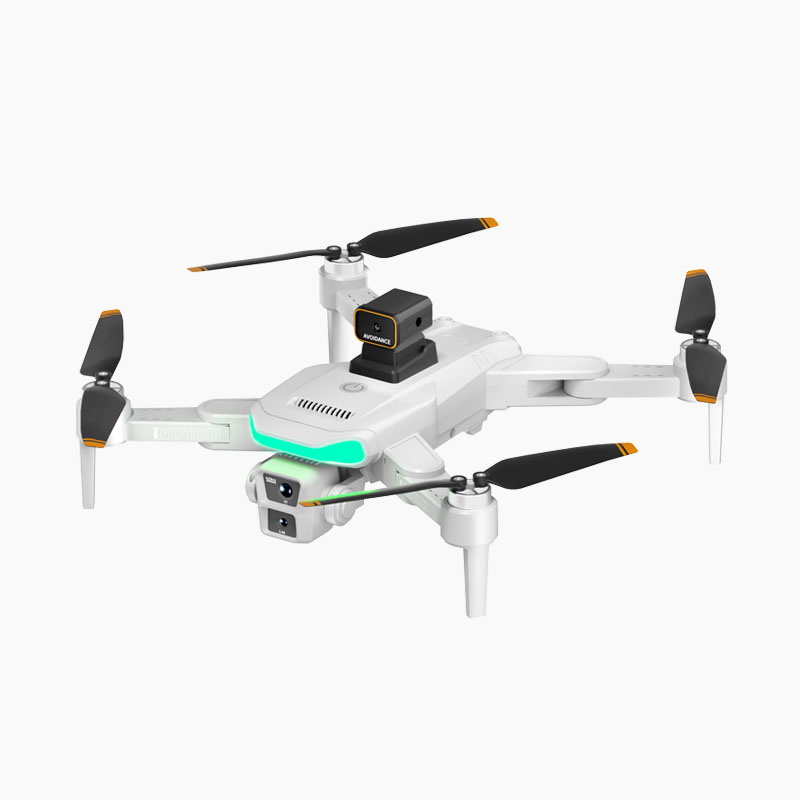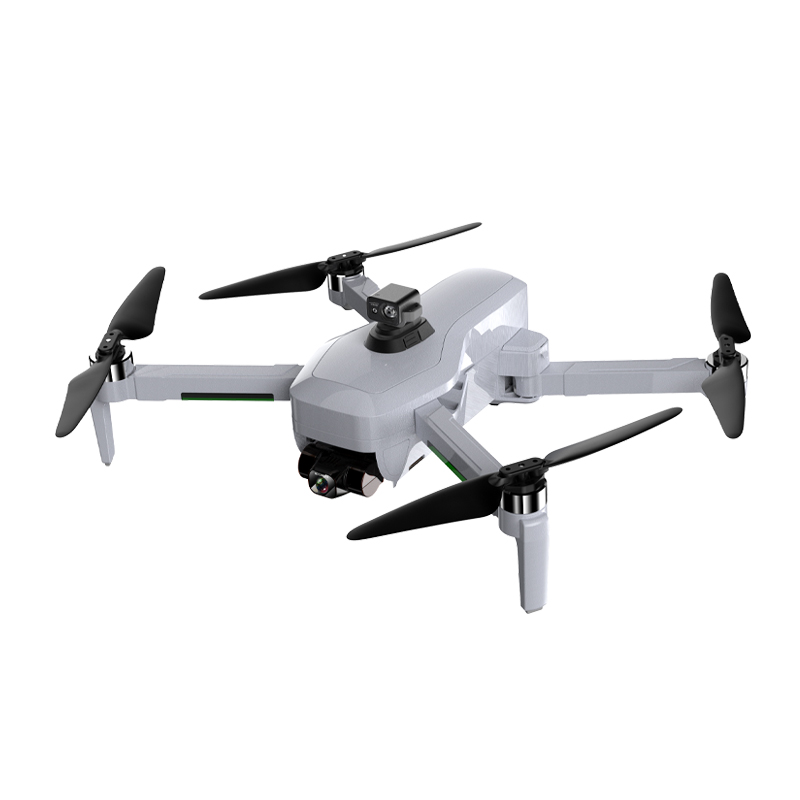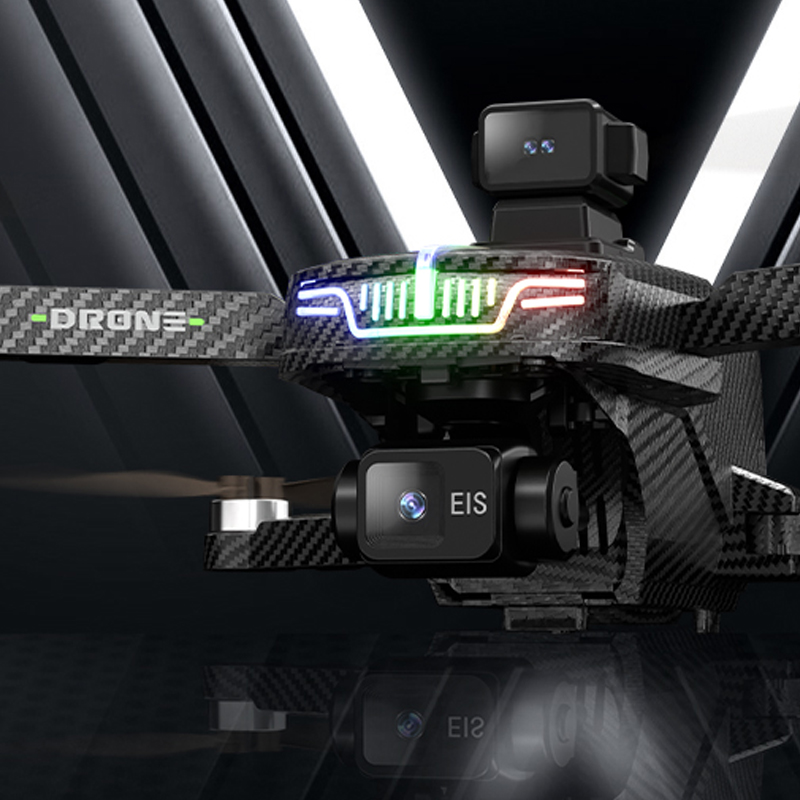Introduction
The Significance of CE – UAS Certification
In the rapidly evolving landscape of the European drone market, CE – UAS (Unmanned Aerial Systems) certification has emerged as a cornerstone for ensuring the safe and compliant operation of drones. This certification serves as a mark of compliance with European Union (EU) regulations, acting as a gateway for drone manufacturers and operators to access the vast European market. For manufacturers, obtaining CE – UAS certification not only validates the safety and quality of their products but also instills confidence in consumers and regulatory authorities. In a market where safety concerns are at the forefront, CE – UAS certification provides a competitive edge, assuring customers that the drones meet the highest European standards. For operators, it offers a clear framework for legal operation, reducing the risk of fines, legal complications, and potential accidents. This certification is thus integral to the growth and sustainability of the drone industry in Europe, fostering innovation while maintaining safety and regulatory compliance.
Background of CE – UAS Certification
The advent of CE – UAS certification is closely tied to the exponential growth of the drone industry in Europe. In recent years, drones have found applications in a wide range of sectors, from agriculture and construction to cinematography and delivery services. However, this growth also brought about a series of challenges, particularly in terms of safety and privacy. With an increasing number of drones taking to the skies, there was a growing need to regulate their operation to prevent potential collisions with manned aircraft, protect privacy, and ensure the safety of people and property on the ground.
In response to these challenges, the European Union introduced a comprehensive regulatory framework for drones, with CE – UAS certification at its core. This framework was designed to standardize the requirements for drone design, manufacturing, and operation across the EU member states. It took into account various factors, such as the size and weight of the drone, its intended use, and the level of risk it posed. By establishing these common standards, the EU aimed to create a single market for drones, where certified drones could be freely sold and operated across Europe. This not only simplifies the regulatory process for manufacturers and operators but also enhances the overall safety and security of drone operations in the region.
What is CE – UAS Certification
Definition and Concept
CE – UAS certification is a compliance certification specifically designed for Unmanned Aerial Systems (UAS), commonly known as drones. The “CE” mark, which stands for “Conformité Européene” (French for European Conformity), is a mandatory conformity marking for certain products sold within the European Economic Area (EEA). When applied to UAS, the CE – UAS certification indicates that the drone system, including the drone itself, its associated components, and the control station, complies with a set of harmonized European Union regulations.
This certification is not just a simple label but a comprehensive attestation of a drone’s compliance with multiple aspects. It ensures that the drone meets safety requirements, such as having appropriate safeguards to prevent collisions and malfunctions that could pose risks to people, property, or other aircraft. It also verifies that the drone adheres to environmental protection standards, considering factors like noise emissions and electromagnetic compatibility. For example, a drone’s electromagnetic emissions must be within the limits set by EU regulations to avoid interfering with other electronic devices, such as communication systems or navigation equipment.
Moreover, CE – UAS certification takes into account the quality and reliability of the drone. Manufacturers need to demonstrate that their products have been designed and tested to withstand normal operating conditions and potential stressors. This involves conducting a series of tests, including but not limited to durability tests, performance tests in different environmental conditions, and safety – critical system checks. In essence, CE – UAS certification serves as a seal of approval, assuring users, regulatory bodies, and the general public that the certified drone systems are safe, reliable, and compliant with European standards.
Benefits of CE – UAS Certification
For Manufacturers
1. Enhanced Product Credibility: In a highly competitive global market, CE – UAS certification serves as a powerful tool for manufacturers to distinguish their products. It acts as a visible endorsement of a drone’s quality, safety, and compliance with strict European regulations. For instance, when a manufacturer displays the CE – UAS mark on their drone, it immediately signals to potential customers that the product has undergone rigorous testing and meets the high – standards set by the European Union. This can significantly enhance the product’s reputation and brand image. A study by a market research firm found that products with recognized certifications like CE – UAS are often perceived as being 30% more reliable by consumers compared to non – certified counterparts. This increased perception of reliability can lead to higher customer trust, which in turn can result in more repeat purchases and positive word – of – mouth recommendations.
2. Market Expansion: The European market is one of the largest and most lucrative in the world for drone – related products. Obtaining CE – UAS certification unlocks the doors to this vast market. Manufacturers can freely sell their certified drones in all EU member states without the need to comply with a patchwork of different national regulations. This not only simplifies the sales process but also reduces the costs associated with market entry. For example, a small – to – medium – sized drone manufacturer in Asia that secures CE – UAS certification can expand its customer base from its domestic market to the entire European region, potentially increasing its sales volume by several hundred percent. Moreover, having a CE – UAS – certified product can also open up opportunities in other international markets that recognize and respect the European certification standards, further expanding the manufacturer’s global reach.
3. Competitive Edge: In a crowded marketplace filled with numerous drone manufacturers, CE – UAS certification provides a distinct competitive edge. It allows manufacturers to differentiate their products from competitors who may not have obtained the certification. This can be a crucial factor in winning tenders and contracts, especially in sectors where safety and compliance are of utmost importance. For example, in government – sponsored infrastructure inspection projects or large – scale agricultural drone – based monitoring initiatives, companies with CE – UAS – certified drones are often given preference. This is because these projects require a high level of safety and reliability, which the CE – UAS certification ensures. By having this certification, manufacturers can bid for more high – value projects and gain a larger share of the market.
For Consumers
1. Safety Assurance: Safety is a top – priority for consumers when using drones, especially considering the potential risks associated with flying unmanned aircraft. CE – UAS certification ensures that the drones they purchase meet strict safety requirements. For example, the certification process includes tests to ensure that the drone’s propellers are properly guarded to prevent accidental injury, and that its navigation and control systems are reliable to avoid collisions. A consumer can have peace of mind knowing that a CE – UAS – certified drone has been designed and tested to minimize the risk of malfunctions or accidents. This safety assurance is not only important for the user but also for bystanders and other aircraft in the vicinity. In a survey of drone users, over 80% of respondents stated that they would only purchase a drone if it had a recognized safety certification, such as CE – UAS.
Challenges and Solutions in CE – UAS Certification
Common Challenges
Complex Technical Standards
One of the primary challenges in obtaining CE – UAS certification is the complexity of the technical standards. These standards cover a wide range of aspects, including drone design, safety features, and communication protocols. For example, the standards related to drone safety require manufacturers to implement advanced collision – avoidance systems. However, as technology evolves rapidly, these standards are also subject to frequent updates. This poses a significant challenge for manufacturers, as they must constantly stay abreast of the latest requirements and make corresponding adjustments to their products. A study by a leading drone industry research firm found that over 70% of small – to – medium – sized drone manufacturers struggle to keep up with the pace of standard updates. Failure to comply with the updated standards can lead to certification delays or even rejection, resulting in lost market opportunities and increased costs.
Moreover, the technical standards are often highly detailed and require in – depth technical knowledge to interpret and implement. For instance, the electromagnetic compatibility standards for drones demand a thorough understanding of electrical engineering principles to ensure that the drone does not interfere with other electronic devices. This complexity can be overwhelming for some manufacturers, especially those with limited technical resources.
High Costs
The cost associated with CE – UAS certification is another major hurdle. The certification process involves several costly elements. First, there are the testing fees. Drones need to undergo a series of comprehensive tests, such as safety tests, performance tests, and environmental tests. These tests are often conducted by specialized third – party testing laboratories, and the fees can be substantial. For example, a single – safety – related test for a medium – sized commercial drone can cost upwards of $5,000.
In addition to testing fees, there are significant costs associated with document preparation. Manufacturers are required to provide detailed technical documentation, including design specifications, test reports, and user manuals. Compiling this documentation requires a significant investment of time and resources. A team of engineers and technical writers may need to spend weeks or even months preparing the necessary documents. The cost of hiring these professionals, along with the cost of any software or tools used for document creation, can add up quickly. Some manufacturers estimate that the cost of document preparation alone can account for 30 – 40% of the total certification cost.
Solutions and Suggestions
Professional Guidance
To overcome the challenges posed by complex technical standards and high costs, seeking professional guidance is highly recommended. Professional certification agencies have in – depth knowledge and experience in the CE – UAS certification process. They can provide manufacturers with detailed guidance on how to interpret the technical standards and ensure compliance. For example, these agencies can help manufacturers understand the specific requirements for each type of drone, such as the differences in standards for consumer – grade and industrial – grade drones. They can also offer advice on the most efficient ways to conduct tests and prepare documents, saving manufacturers both time and money.
Furthermore, professional agencies can assist in the pre – certification assessment. They can review the drone’s design and documentation before the official certification process begins, identifying potential issues and providing solutions. This proactive approach can significantly reduce the risk of certification failure and subsequent re – submission costs.
Cost – effective Strategies
There are several cost – effective strategies that manufacturers can adopt to mitigate the high costs of CE – UAS certification. One such strategy is to optimize the document preparation process. Manufacturers can create a standardized document – preparation template that can be reused for different drone models. This reduces the time and effort required to create new documents for each product. Additionally, they can invest in document – management software that streamlines the process of organizing, updating, and sharing technical documents.
Another cost – saving strategy is to collaborate with other manufacturers or industry associations. By pooling resources, manufacturers can share the costs of testing and certification. For example, they can jointly hire a testing laboratory at a discounted rate or share the cost of hiring a professional certification consultant. This collaborative approach not only reduces costs but also provides an opportunity for knowledge sharing and best – practice exchange within the industry.
Case Studies
Successful Certifications
One notable example of a successful CE – UAS certification is that of Globalwin Group, a leading drone manufacturer based in China. Globalwin Group aimed to introduce a new line of industrial – grade drones for infrastructure inspection purposes. To achieve CE – UAS certification, they assembled a cross – functional team consisting of engineers, quality assurance experts, and regulatory compliance officers.
Future Trends of CE – UAS Certification
Policy Updates
As the drone industry continues to grow and evolve, the policy landscape for CE – UAS certification is also likely to undergo significant changes. In the coming years, we can expect to see more stringent safety requirements. With the increasing number of drones in the skies, ensuring the safety of manned aircraft and people on the ground will remain a top priority. For example, regulatory authorities may introduce more advanced collision – avoidance system requirements. These could include the mandatory use of real – time sensing and communication technologies that can detect and avoid other aircraft, both manned and unmanned, within a larger radius.
Moreover, privacy – related policies are likely to become more robust. As drones are often equipped with high – resolution cameras and other data – collection devices, there is growing concern about privacy invasion. Future CE – UAS certification policies may require manufacturers to implement more sophisticated privacy – protection measures, such as encrypted data storage and transmission for any collected data, and clear and transparent privacy policies for users. These policy updates will not only enhance the safety and privacy of the public but also set a higher standard for the drone industry in Europe.
Industry – Driven Developments
The rapid development of the drone industry itself will also drive changes in CE – UAS certification. New technologies are constantly emerging in the drone field, such as advanced battery technologies, artificial intelligence – based flight control systems, and swarming capabilities. These technological advancements will prompt the update of certification standards. For instance, as more efficient and longer – lasting batteries are developed, the certification standards related to battery safety and performance will need to be revised. This could involve new testing procedures to ensure the safety and reliability of these new – generation batteries under different operating conditions.
Furthermore, the expansion of drone applications will also impact certification. As drones are increasingly used in critical sectors like emergency response, healthcare delivery, and high – security areas, the certification requirements will become more tailored to these specific applications. For example, drones used in medical supply delivery may need to meet additional hygiene and temperature – control requirements. The industry’s growth and diversification will thus play a crucial role in shaping the future of CE – UAS certification, ensuring that the standards keep pace with technological and application – based developments.
Conclusion
Recap of Key Points
CE – UAS certification is a fundamental aspect of the European drone industry. It serves as a comprehensive compliance mechanism, ensuring that drones meet strict safety, quality, and environmental standards. The certification process, though complex, is essential for both manufacturers and consumers. Manufacturers benefit from enhanced product credibility, market expansion opportunities, and a competitive edge in the market. They can access the large European market and other international markets that recognize the European certification standards. For consumers, CE – UAS certification offers safety assurance and quality – assured products, giving them peace of mind when using drones.
However, the path to obtaining CE – UAS certification is not without challenges. Complex technical standards and high costs pose significant hurdles for manufacturers. The technical standards cover a wide range of aspects and are subject to frequent updates, making it difficult for manufacturers to keep up. The high costs, including testing fees and document – preparation expenses, can also be a deterrent. But with professional guidance and cost – effective strategies, such as seeking help from professional certification agencies and collaborating with other manufacturers, these challenges can be overcome.
Case studies have shown the real – world impact of CE – UAS certification. Successful certifications, like that of Globalwin Group, have led to increased market share and business growth.
Final Thoughts
As the drone industry continues to grow and innovate in Europe, CE – UAS certification will play an even more crucial role. The expected policy updates and industry – driven developments will shape the future of this certification. Stricter safety and privacy – related policies, along with the need to adapt to new technologies and expanding drone applications, will ensure that the certification standards remain relevant and effective.
Manufacturers, operators, and all stakeholders in the drone industry should closely monitor the developments in CE – UAS certification. By staying informed and proactive, they can ensure compliance, enhance the safety and quality of their products and operations, and contribute to the sustainable growth of the drone industry in Europe. The future of the European drone market looks promising, and CE – UAS certification will be the key to unlocking its full potential.
Post time: Feb-20-2025




.jpg)




